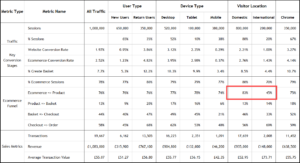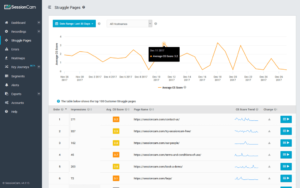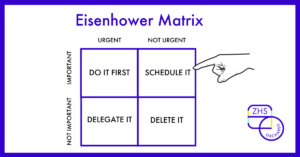The purpose and output of the Business Performance Audit is a set of recommended actions, based on data, that will improve your business performance (however you define success). I am confident I can identify practical actions for a business in any sector and using any data set provided to me. This is the project for when you have lots of data but are not sure what it all means or how to get value from it.
Where I have the most experience though, is with Ecommerce websites and Google Analytics data. I have reviewed dozens (it might be hundreds) of these websites over the years of all shapes and sizes. Ecommerce websites have a clear primary objective with multiple useful secondary actions, all of which make them easier to analyse and get value out of the data. Google Analytics (GA) has been my primary tool for around 10 years, I am happy to say I know it inside & out.
This makes the example of an Ecommerce website, that has GA as its web analytics tool, as the best option to talk through what is involved, step by step, in a Business Performance Audit.
As a reminder, the cost of this project is €14,250 + VAT. The presentation of recommended actions, informed by the data, should take place within a month of the project commencing.
Pre-project check
I will not agree to the project if certain key data points are not available. It must be possible to identify the stages of the Ecommerce Funnel using GA segments (and potentially simpler methods). Additionally, transactions (or sessions that view the confirmation page) need to be within 10%, ideally 5%, of actual transactions.
If this data is not available or known to be inaccurate, the tracking must be corrected before a Business Performance Audit can proceed. Otherwise, the inaccurate data can lead to the wrong actions being recommended.
Tracking can be resolved internally or I can provide support provided as an add-on service to the Business Performance Audit. Once resolved, data needs to collect for at least two weeks before the project starts.
Initial Discovery Actions
The project will kick off with a set of Discovery taskss to enable me to understand your business and website. These learnings will inform the direction of the analysis and ensure recommended actions are in line with what it is possible for the organisation to act upon.
These Discovery tasks are:
- Distribute a survey to Digital/Ecommerce team members. The feedback from this will inform about known business issues, current confidence in & usage of data and the actions taken that could be informed by data.
- Creation of a website visualisation map (will require access to place multiple dummy orders).
- Creation of a list of website micro conversion actions, categorising as to importance
- Documentation on the GA set-up (if this doesn’t already exist). This will include the naming conventions used for marketing campaign tracking.
- Review of available data sources outside of GA ( e.g. customer database, transactional data), what data is available within these data sets and how this data can be accessed
This first stage of the project will conclude with a workshop. Initial documentation will be reviewed and confirmed/corrected. A key area of discussion is on how your business differs from any other ecommerce business (I already know the normal customer flow/experience for a typical ecommerce business).
Data Collection Changes
Any quick GA set-up changes that have been identified will be made at this stage. There will be no historical data available but it will be available by the end of the project and for the future.
Typical changes are:
- Exclude internal or fake traffic
- Create a Goal for each stage of the Ecommerce funnel
- Create a Content Grouping for Page Type
- Exclude URL query parameters from page names
- Create a Custom Dimension for product names or SKU codes from product pages
- Create Channel Groupings
- Capture the full Page URL in a Content Grouping
Unless a session recording tool is already in place, Glassbox (following the acquisition of SessionCam) will be implemented using their free trial. For a quick implementation, pages where work is required to exclude information typed into forms will be excluded.
Historical Data Trends
The analysis commences with charting out historical trends for key metrics. In each case, I am looking for spikes (positive or negative) and step changes in the data. Any of these will be investigated as the timing can lead us to an internal/external change which impacts customer behaviour – a great learning experience to inform future actions.
The key metrics will be Sessions, Transactions, Conversion Rate and Bounce Rate. The completion rates for each stage of the funnel will also be reviewed if this information is available.
Performance Diagnostic
The key tool for analysis of the GA data will be a Performance Diagnostic. This will be created for a recent four week period, excluding any events that would skew the data e.g. Black Friday.
All data points will be reviewed and unusual data highlighted for further investigation. I anticipate a list of 10+ data points for further investigation from the review of the Performance Diagnostic.
Each area identified will then be investigated in more detail, using all data available through GA and other data sources, including Glassbox. This will form the bulk of the analysis work during this project. Areas for investigation could be anything, depending on the data, but examples include:
- Evaluating an underperforming marketing channel
- Identifying issues with people finding appealing products
- The page layout on a key page
- Language/currency issues
- Information requested in a form
- Available payment methods
- Bugs in certain browsers
Merchandise Report
An Ecommerce Merchandise report will be created and automated for future use, assuming GA tracking allows for this. This report uses the Product Page Success Rate (Adds to Basket / View of Product Page) to identify outlier products compared to internal benchmarks.
Examples will be provided to demonstrate the use of the Merchandise report. These examples will identify products that should be promoted to boost sales and products where an issue exists that that is reducing sales.
Marketing Campaign Review
From the original audit of marketing campaigns and the discussions that followed, a list will be created of all marketing campaigns. They will be evaluated using default GA attribution models to identify any campaigns which are clearly under or over performing.
Marketing campaigns will then be grouped based on the stage of the customer lifecycle they are targeting and how people should react when exposed to these ads. This information will be listed along with the appropriate KPIs/visitor action that should be used to evaluate each campaign on a last click basis.
Customer Data Review
Due to the limited time available within this project, customer data will not be analysed in detail. A RFM model will be created to help understand the nature of customers with details provided on how customers could be segmented based on available data. This data may also be used to investigate any identified issues in more detail.
Product Data Review
Product transaction data will be used to categorise products based on sales data, typically applying product grades. These are useful for developing different tactics to be applied for products within each grade grouping. The current tactics for products will be reviewed for obvious changes based on these grades.
Glassbox
As previously mentioned, Glassbox will be added to the website if possible, assuming no equivalent tool has already been implemented (which would then be used instead). This tool will be used in two ways.
Glassbox recordings will be used to review visitor behaviour around pain points identified with the Performance Diagnostic. This may provide the WHY once the WHAT has been found.
The Glassbox Struggle Detection feature can also identify pain points on the website that were not exposed elsewhere in the data. Anything flagged up here will also be investigated as to the cause and impact.
Final Presentation
The second last step in this project is a presentation to key stakeholders covering all findings and recommended actions (based on the findings). It is anticipated this session will take around two hours as points raised are discussed in detail. Some points may need to be verified through additional context known to stakeholders due to their knowledge of the company and customers (that I cannot quickly develop).
The output of this presentation is a list of actions the organisation can commit to taking to improve business performance. Any potential barriers to taking these actions should be discussed here to see if there are quick answers to overcome these barriers.
Three Month Review
The final action of this project is a review of these actions three months later to discuss what has been actioned and what is outstanding. Ideally the initial impact from changes will be visible and can be reviewed in the data.
Your Thoughts?
That covers the process I go through in a Business Performance Audit in a lot more detail. The work could be performed by any analyst. My difference is I bring the experience of the dozens of ecommerce websites viewed, the knowledge of these different analysis tool and a knack for spotting weird/interesting data points. All of this with a very clear understanding that data represents people, your customers and potential customers – there is a need to get into their heads in order to read the data correctly.
My offer of a 20% discount on the first Business Performance Audit still stands for the first organisation to take me up on it, reducing the price of this project down to €11,400 + VAT. Act fast to take advantage of this offer.







